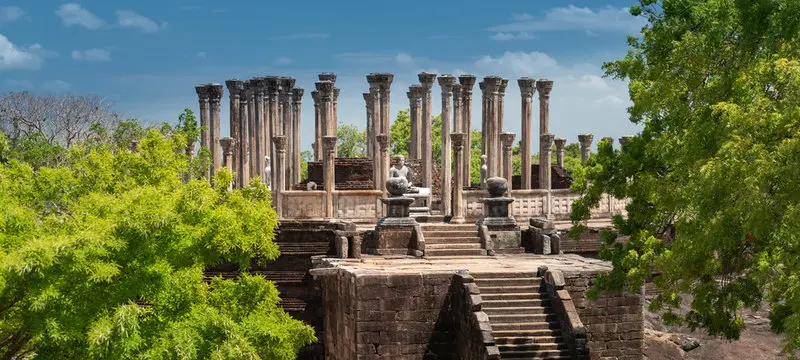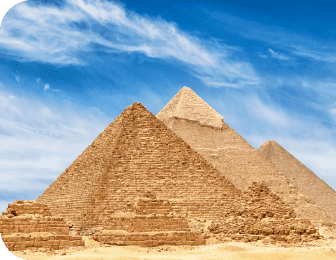.webp?alt=media&token=2bbe9eb8-8a94-4bf3-898a-bac2d63b777c)

.webp?alt=media&token=29619a32-f884-497e-afe9-1267ed8a5386)
.webp?alt=media&token=2943a745-d63c-42bf-8205-96585c8f398c)
.webp?alt=media&token=2bbe9eb8-8a94-4bf3-898a-bac2d63b777c)

.webp?alt=media&token=29619a32-f884-497e-afe9-1267ed8a5386)
.webp?alt=media&token=2943a745-d63c-42bf-8205-96585c8f398c)
.webp?alt=media&token=2bbe9eb8-8a94-4bf3-898a-bac2d63b777c)
Polonnaruwa
Polonnaruwa
Polonnaruwa, the medieval capital of Sri Lanka, stands as a grand testament to the island’s golden age of art, architecture, and governance. Flourishing under King Parakramabahu I in the 12th century, it became a well-planned city of palaces, monasteries, and gardens that showcased both spiritual devotion and engineering mastery. Today, Polonnaruwa’s ruins are remarkably well-preserved, offering visitors a glimpse into a thriving civilization that valued knowledge, beauty, and sustainability.
The serene stone sculptures at Gal Vihara, the massive Rankoth Vehera, and the impressive Royal Palace Complex narrate tales of royal splendor and Buddhist faith. The Parakrama Samudra, a vast reservoir still functioning today, reflects the ingenuity of ancient Sri Lankan hydraulic systems. Recognized as a UNESCO World Heritage Site, Polonnaruwa blends historical charm with tranquil natural surroundings, making it one of Sri Lanka’s most inspiring destinations. From exploring centuries-old ruins to watching monkeys roam through moss-covered temples, Polonnaruwa offers travelers a timeless encounter with Sri Lanka’s medieval grandeur and spiritual essence.
- Gal Vihara
- Parakrama Samudra
- Rankoth Vehera
- Royal Palace Complex
- Lankatilaka Image House
Polonnaruwa, the second ancient capital of Sri Lanka, is a living monument to the island’s medieval brilliance and cultural revival. After the decline of Anuradhapura, the city of Polonnaruwa rose to prominence in the 11th and 12th centuries, reaching its zenith under the reign of King Parakramabahu I (1153–1186 AD). Known for his wisdom and visionary leadership, the king transformed Polonnaruwa into a model city of architectural elegance, religious significance, and hydraulic perfection. At the heart of Polonnaruwa lies the Gal Vihara, one of Sri Lanka’s most exquisite rock-cut Buddhist temples. Carved into a single granite outcrop, it features four majestic Buddha statues in different postures — seated, standing, and reclining — that embody artistic mastery and spiritual serenity. Nearby, the Lankatilaka Image House stands as a monumental shrine with a towering 17-meter Buddha statue surrounded by brick walls that still exude ancient grandeur. The Royal Palace Complex, once a seven-story structure, reveals the sophistication of medieval Sri Lankan architecture. Its intricate stone pillars and remnants of royal chambers illustrate the power and prestige of the Polonnaruwa kingdom. The Rankoth Vehera, one of the largest stupas in Sri Lanka, continues to be a sacred site for Buddhist devotees. One of the city’s engineering marvels is the Parakrama Samudra, an enormous artificial lake that symbolizes King Parakramabahu’s famous decree: “Not even a drop of rainwater should flow into the ocean without being made useful to man.” This vast reservoir still irrigates surrounding farmlands, proving the timeless effectiveness of ancient hydraulic systems. Beyond monuments and temples, Polonnaruwa offers a unique ambiance where history meets nature. The ruins are spread across a lush landscape filled with tamarind trees, lotus ponds, and troops of playful monkeys, creating a serene yet lively environment. Cycling through the archaeological park is a popular way for visitors to explore the ancient city while absorbing its tranquil charm. Today, Polonnaruwa stands as a UNESCO World Heritage Site, drawing historians, photographers, and travelers eager to rediscover the soul of medieval Sri Lanka. Its combination of artistic excellence, engineering innovation, and spiritual depth continues to inspire awe. As a key destination in Sri Lanka’s Cultural Triangle, Polonnaruwa not only celebrates the island’s glorious past but also plays a vital role in promoting sustainable tourism and preserving the heritage that defines the nation’s enduring identity.
Complete Your Booking
Fill in your details to get more details and Booking.




